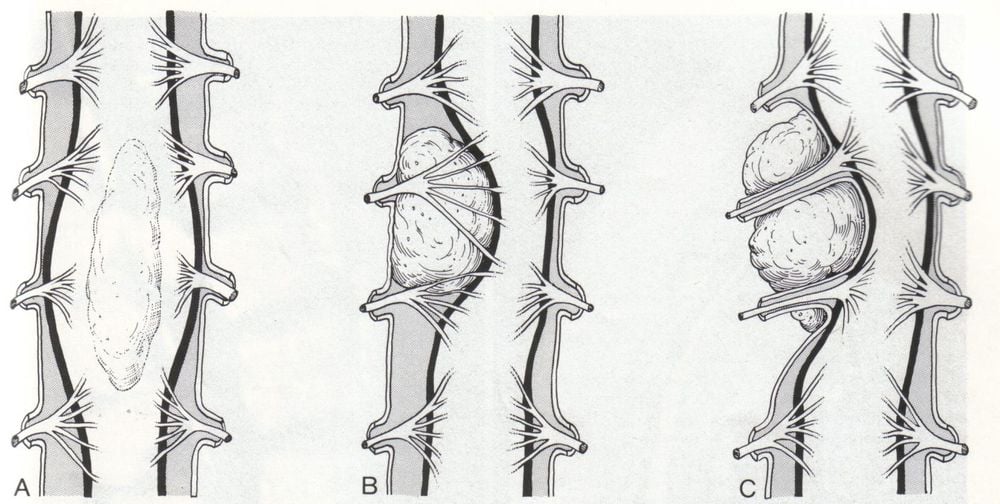This is an automatically translated article.
Myeloma can be primary or secondary, benign or malignant. There are many treatments for spinal cord tumors. In particular, spinal cord - nerve root epidural tumor surgery is the method being widely indicated for myeloma patients.
1. An overview of myeloma
Myeloma is a rare disease, accounting for only about 2% of all tumors in the body in general and accounting for 15% of all tumors of the central nervous system.
There are many ways to classify myeloma, namely:
By localization: Tumor in the cervical spine: Less than 25% of the population, usually in the form of intramedullary tumors; Tumor in the thoracic spine: accounted for over 65%; Tumors in the lumbar spine - sacrum: accounted for 15 - 25%, often in the form of nerve root tumors; By organization: Divided into 2 groups: Classically: Includes primary tumors (myeloblasts, hemangiomas, endothelial tubules, glioblastomas, ...) and metastatic tumors caused by cancer from another organ to the marrow; According to histological and histological origin: Meningioma (medullary tumor, accounting for 15 - 25%) and Neurinoma (neuroradnoma, accounting for 30 - 50%), low percentage of tumors (hemangioma) , lymphoma , chondroma , metastatic tumor , dermoid cyst , lipoma , endothelial tubular tumor , astrocytoma , ... ); Anatomy: Intramedullary tumors: Rare, accounting for 5 - 10%, are usually medulloblastoma, lipoma, cyst or glioblastoma; Extramedullary tumors: Common, divided into extramedullary - subdural tumors (usually medulloblastoma, nerve root tumor, which is a benign tumor, has a solid density, a clear boundary, and can be removed when surgically removed. complete tumor, with little damage to the spinal cord and nerve roots), extramedullary - epidural (usually metastatic, hemangioma or bone tumor,...) and mixed tumor (tumor growing both) inside and outside the dura, with 2 sacs or an hourglass, difficult to surgically remove myeloma completely).

Có rất nhiều loại u tủy
2. Surgical method of spinal cord - nerve root epidural tumor
2.1 Indications/contraindications
Indications
Indications for emergency surgery in case the tumor is stuck or there is bleeding in the tumor causing paralysis of the limbs, sudden urinary retention; Absolute indication for surgery in all confirmed cases of myeloma; Indications for surgery are relatively high in cases of cervical myeloma, the tumor size is too large, detected at a late stage, the patient is old and weak, has pulmonary tuberculosis or has malignancies in the spine; Surgery in the stage of nerve root pain brings good results. Contraindications
People with severe co-morbid systemic diseases; People with high neck myeloma are too large and surgery is not expected to bring positive results; The patient has entered a late stage, is elderly, is in poor health, has advanced pulmonary tuberculosis or has obvious malignancies in the spine, with widespread metastases.
2.2 Preparing for surgery
Personnel performing: Main surgeon, surgical assistant, nursing assistant; Technical equipment: Routine spine surgery kit (scalpel, trigger, disc clamp, dissection, suction machine, needle-carrying pliers, electric knife) and consumable instruments (gauze, cotton, thread) stitches, skull wax,...); Patient: Be informed of the need for surgery, the procedure, and the potential for complications; fasting and enema from the night before surgery; Medical records: Fully completed according to regulations and with the commitment of the patient's family.
2.3 Carrying out surgery with the technique of surgery from the back
Check the records, surgery sheets and patients before anesthesia; After anaesthesia or spinal anesthesia, place the patient in the prone position with the 2 pelvic and shoulder spines elevated; Use an intraoperative X-ray machine or count the posterior interspinous space to determine the exact location of the skin incision; Regional anesthesia with a mixture of Adrenalin and Xylocaine with the appropriate ratio in the paravertebral muscle; Incision of the skin, exposing the surgical site (the seam between the two posterior spinous processes); Open the posterior arch corresponding to the location of the myeloma, open the yellow ligament, use trigger pliers or a sharp knife to remove the yellow ligament; Exposing the myeloma, separating the tumor from the medulla oblongata and nerve roots. Depending on the nature of the tumor to remove the tumor partially or completely, pay attention to gentle manipulation to avoid causing damage to the spinal cord and nerve roots; Careful hemostasis in the area of tumor resection; If the pulp is torn, use prolene 4.0 or 5.0 to close it; Close the muscle, fascia, subcutaneous layer, and skin with suitable medical sutures. If necessary, drainage can be placed into the surgical cavity.
2.4 Follow-up after surgery
Closely monitor the patient's overall health indicators such as respiration, temperature, pulse, blood pressure; Monitor bleeding at the incision site; Monitor for possible damage to the spinal cord or nerve roots.

Sau phẫu thuật, người bệnh cần được theo dõi kĩ càng về huyết áp, nhiệt độ
2.5 How to handle common complications
Incisional bleeding: Perform enhanced sutures to stop bleeding; Dural tear: Treat by suturing with prolene 4.0 thread; Injury to the spinal cord and nerve roots: Treatment is with corticosteroid therapy and functional rehabilitation; Cerebrospinal fluid leak after surgery: Should be performed again to patch the fistula. Spinal cord tumor - nerve root surgery is performed by a highly qualified and experienced doctor, so the patient does not need to be too worried, keeping his mind relaxed, calm and well coordinated with the doctor. to improve the chances of successful treatment and reduce the risk of complications.
Customers who need examination and treatment can directly go to Vinmec International General Hospital or contact the hotline HERE.
MORE:
Spine with tumor: What you need to know Common diseases of the spine The role of magnetic resonance imaging (MRI) in the diagnosis of spinal and lumbar diseases Recommended video:
The journey to find the face for "the boy who is not present" Le Trung Tuan













